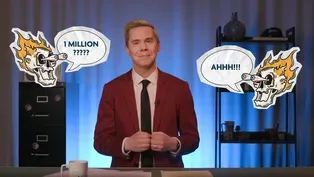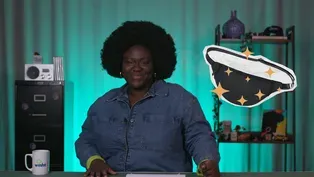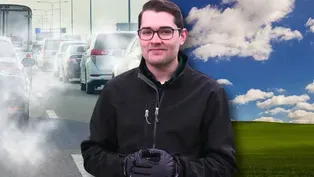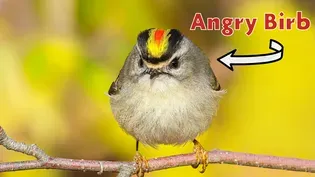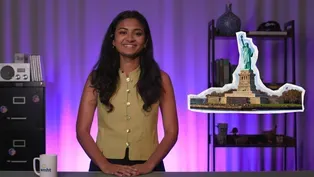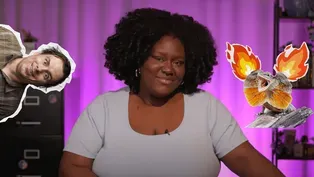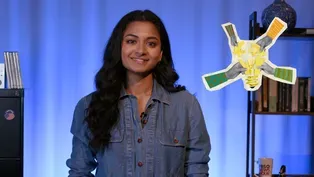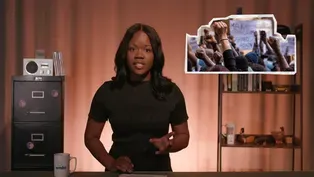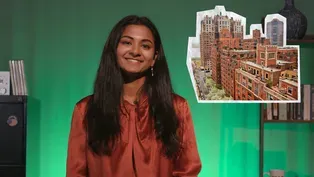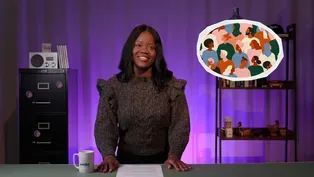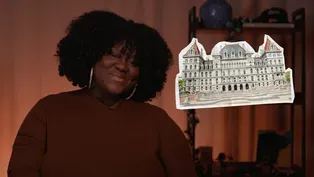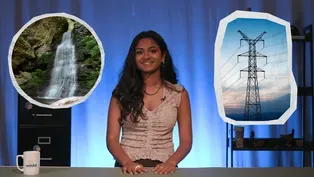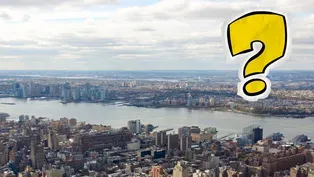
Can We Make NY's Forests Healthier? | NY& Climate
Clip: Special | 7m 59sVideo has Closed Captions
Host Dana Wright looks at ways we can manage and improve the health of our forested lands.
Join host Dana Wright as he looks at ways we can manage and improve the health of New York's forested lands. EXPLORE MORE: https://wmht.org/climate DEC's Regenerate New York Program: https://dec.ny.gov/nature/forests-trees/private-forest-management/regenerate-new-york-grant-program
Problems with Closed Captions? Closed Captioning Feedback
Problems with Closed Captions? Closed Captioning Feedback
New York NOW is a local public television program presented by WMHT

Can We Make NY's Forests Healthier? | NY& Climate
Clip: Special | 7m 59sVideo has Closed Captions
Join host Dana Wright as he looks at ways we can manage and improve the health of New York's forested lands. EXPLORE MORE: https://wmht.org/climate DEC's Regenerate New York Program: https://dec.ny.gov/nature/forests-trees/private-forest-management/regenerate-new-york-grant-program
Problems with Closed Captions? Closed Captioning Feedback
How to Watch New York NOW
New York NOW is available to stream on pbs.org and the free PBS App, available on iPhone, Apple TV, Android TV, Android smartphones, Amazon Fire TV, Amazon Fire Tablet, Roku, Samsung Smart TV, and Vizio.
Providing Support for PBS.org
Learn Moreabout PBS online sponsorship(gentle music) - The stunning Catskills, the majestic Adirondacks, the mangled shrubs that are taking over my backyard.
New York's forests are important for countless reasons.
They give us a chance to escape to nature, which has significant mental health benefits.
They're also economically important to our state, they provide habitat for wildlife, and they help combat climate change by sequestering CO2.
And with New York's new Climate Act, which aims to drastically reduce the state's net carbon emissions, we're now also relying on our forests to sequester enough carbon for us to hit our state goals, making forest health as important as ever.
So with all of the ways our forests take care of us, it's important to ask how can we take care of our forests?
The state's climate plan cites the importance of forest management, but how does one manage a forest?
This is what I set out to learn.
And who better to learn from than, well, a forester?
Meet Annabel Roberts-McMichael.
She works in the Hudson Valley advising landowners on ways they can improve the health of their forests.
This is important work, because almost 3/4 of New York's forested lands are privately-owned.
- The sort of classic forester is someone who will inventory a forest, understand what species are present, and then create a forest plan for how to both harvest timber from the forest and take care of it over the years.
- [Dana] The first example of forest management she showed me was a logging site at Tomorrow Tomorrow Farm.
- So we're at a logging job today.
We're trying to meld a commercial log sale with a cut that's just for the purpose of improving forest health.
So we're here improving the overstory and trying to create a seed source of trees that are really healthy for the future.
- [Dana] If you're like me, you may be thinking, "How can cutting down trees help forest health?"
Annabel explains.
- Where we live, almost every forest was completely clear cut in the 1700s, 1800s, and so the forest where we live has grown back from nothing.
And in that time, for the most part, what people have done is cut down the nicest trees because of course they make great lumber.
Over time, when you do that, the forest health declines, and so you start to have higher and higher proportions of unhealthy trees and lower proportions of healthy trees for the future.
We actually need to actively intervene in our forest to undo that.
- [Dana] Selecting what trees to cut down is a very nuanced process which involves balancing what is economically viable and what would leave the forest in a better place.
But just because we're trying to reduce the number of unhealthy trees doesn't mean all unhealthy trees should be cut.
- [Annabel] So this one's a good example of a reason we didn't mark this tree.
You can get all kinds of wildlife living in those cavities.
Red squirrel can live in them, and they're essential to planting the acorns of the future forest.
You could get a family of raccoons or owls, so we try to never cut down a cavity tree.
- [Dana] Annabel often spoke of looking to the forests of yore for inspiration.
- If this was an old growth forest, there would be these open sunny patches where a very large old tree had come down due to disease or injury, and that is where all of the young regeneration of trees comes up.
And that's exactly what we're trying to imitate in this forest management.
- [Dana] I had a great time learning about how logging plays a role in forest management.
But when you're at a site where trees are being felled, you always have to remember, safety first.
The following week, I went to see another project Annabel was working on.
- Now what we have is this statewide, regionwide issue of forest regeneration.
Our forests aren't regenerating, so there isn't another class of baby trees coming up.
The reason that the younger trees are not growing right now, the reason that we have no seedlings and saplings in most forests is because of the pressure of deer brows.
(menacing music) Deer are currently eating sugar maple and white oak, and a lot of our major hardwood species that are really core and keystone species of our ecosystem.
So today we're here to protect regeneration with a deer fence.
They're called deer exclosures.
- So what makes this particular spot good for forest regrowth?
- You can see there's a lot of vegetation in the understory here, and that is indicative that there is a lot of sunlight hitting the forest floor.
We also have some really remarkable, beautiful old seed trees that will create a really wonderful next generation of trees.
- [Dana] It's a simple solution to the problem.
Annabel also showed me some shrubs that typically need to be cleared to make room for regeneration.
- This is a Japanese barberry.
These are some of the invasive shrubs that have been coming into forest understories.
They are taking up a lot of the available sunlight that native species could be in.
But the reason that they are taking up that space is because the deer only eat the native species.
The native plants would actually be growing very abundantly and just as well as these species if it weren't for being hammered by deer.
- So now we know some of the examples of the hands-on work that sets up our forests for success.
But what large-scale work needs to happen if we want improved forest health and sequestration statewide?
New York's Climate Scoping Plan often refers to partnering with universities like SUNY ESF and Cornell to develop forest management strategies for the state.
So I interviewed Colin Beier, a professor at SUNY ESF, to talk big-picture strategy for forest health.
- The three broad strategies for using forest as a climate solution are avoiding conversion, right, or avoiding deforestation, adding new forest land to the landscape, enhancing, improving, or adjusting the management of working forests.
What's happening is that the pressure to sell forest land for development is far exceeding what most can generate revenue-wise sustainably from the land.
So you're trying to create incentives, you're trying to provide resources.
The climate law counts on forest landowners, right, to offset the emissions of sectors that they really have very little to do with.
We need to be careful not to create further disincentives for forest landowners in New York to own and tend their land sustainably.
We can add new forests, but in our part of the world, it's going to take decades for those new forests to really start sequestering carbon.
For every acre that's deforested, even if we replace it with three or five or 10 acres of reforested land, there's a time gap there, right?
All of this carbon is going back to the atmosphere, and the rate at which the reforested land is able to pull some of that back down, there's a mismatch there.
I know that reforested land is a good thing, right?
We need to do it now.
We needed to do it yesterday.
We needed to do it a while ago.
But it's not so simple as like taking something out of this ledger and adding it over here.
- Colin also noted an incentive program run by the DEC called Regenerate New York, which provides funding for landowners who seek to manage their forests or establish new forest land on their property.
He said that Regenerate New York is a good start, but there's a lot of forest land to address.
More information on that program can be found in the video description.
That's all we have time to get to today, but that doesn't mean that we're leaving behind our lovely forests, because next episode we're going to look at bird habitats and migration.
Maybe we'll even hear the call of some beautiful songbirds.
(bird cawing) Maybe not that one.
Until next time, I'll see you outside.
(water running)
Video has Closed Captions
Explore voting in New York State, including turnout, campaign finance, access, and more. (9m 31s)
Video has Closed Captions
Alexis Young provides an in-depth look at New York's abortion laws. (8m 13s)
Addressing Air Pollution in New York's Communities | NY& Climate
Video has Closed Captions
Join host Dana Wright as he explores air pollution's effect on New York's communities. (8m 44s)
Is Climate Change Impacting NY's Birds? | NY& Climate
Video has Closed Captions
Learn why New Yorkers love birds, and why we need to help them in the face of climate change. (9m 10s)
Video has Closed Captions
Raga Justin explains the various forms of international movement to NY. (13m 12s)
Video has Closed Captions
Learn to analyze information sources with Alexis Young. (6m 45s)
Video has Closed Captions
Learn about the basics of organizing, its importance, and the potential community impact. (8m 38s)
Video has Closed Captions
Explore New York's dialogue about policing in the state. (14m 55s)
Video has Closed Captions
Discover NY tenant rights and housing laws that could shape your future. (12m 50s)
Video has Closed Captions
Join Shantel Destra as she demystifies running for local office. (9m 3s)
Video has Closed Captions
Learn about the structure and function of New York's State Government. (10m 5s)
Video has Closed Captions
Exploring New York's climate goals, landmark laws, and advocacy efforts. (10m 50s)
What Does Climate Change Mean for the Hudson River? | NY& Climate
Video has Closed Captions
Explore the Hudson River's climate and pollution challenges and efforts to improve it. (8m 42s)
Providing Support for PBS.org
Learn Moreabout PBS online sponsorshipNew York NOW is a local public television program presented by WMHT
